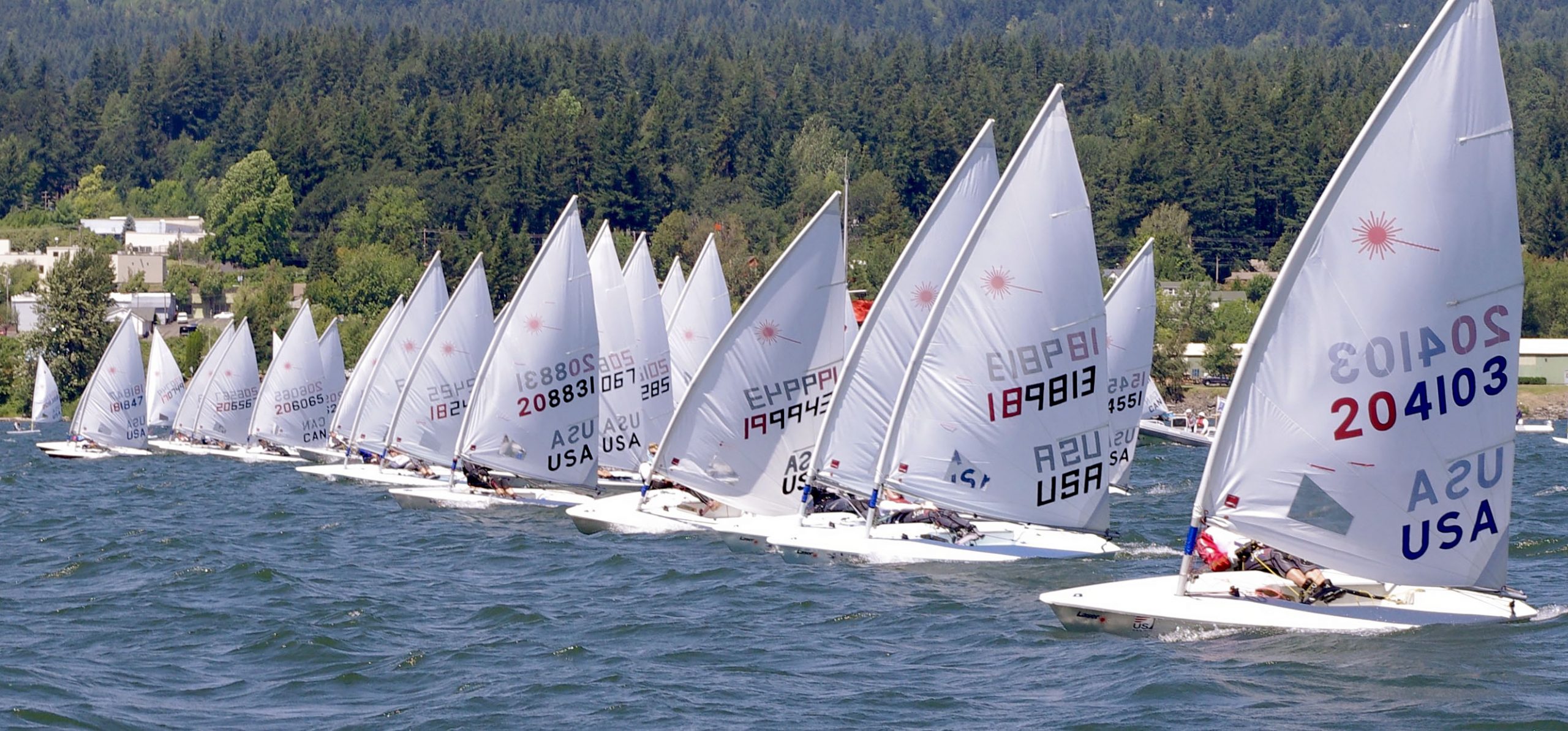Club racing fleets are like house plants: without care and nourishment, they wither away and die. We’ve all seen it. At Willamette Sailing Club (Portland, OR), where I’ve been sailing since the early ‘80s, I’ve watched a lot of one-design fleets come and go – Lasers, Tasars, Thistles, Lido 14s, Daysailors, Coronado 15s, C-Larks (to name just a few), all have gone through boom and bust periods. Some live to boom again; some are now extinct. The eternal question is, what separates the boomers from the dinosaurs? After nearly 40 years of observing this ebb and flow, I have some thoughts:
- Every fleet needs an evangelist. Behind every thriving fleet, there’s one or two sparkplugs, people whose enthusiasm for sailing the boat is infectious, and who actively reach out to share it with others. They organize demo days for new prospects, clinics and training sessions to help newbies get up to speed, parties and other get-togethers where fleet members can meet and bond onshore. They write fleet reports for the club newsletter and bring beer to the après sailing de-briefs. When they move on, someone needs to pick up the torch, or else that fleet’s happy days are numbered.
- Roll out the welcome mat. Jumping into an unfamiliar boat in a competitive fleet can be intimidating. It’s really important for the old-timers to reach out to the newcomers to make them feel comfortable and welcome. This can be as simple as extending a friendly greeting to new arrivals, or going to the extra effort of partnering them with a mentor to guide and support them through their initiation phase. Note: be courteous, and even a bit forgiving, on the race course. Nothing turns off a newbie faster than getting screamed at at the windward mark rounding.
- Let them try before they buy. When LauraLee and I were shopping for a double-handed boat to sail together, the local Tasar fleet invited us to sail their loaner boat. It was the beginning of a beautiful friendship (for us personally as well as the Tasar fleet). The idea of a fleet loaner boat has been adopted with great success by, among others, the RS Aeros in Seattle and the Daysailors and Lido 14s in Portland. Note: The fundraising and restoration work usually required to put a “rescue boat” into service also make great fleet projects.
- Help losers become winners. Sailboat racing is fun, but winning sailboat races is more fun. In a competitive fleet, it can be a steep climb to the winners’ circle. Novices get this and will usually tolerate a season or two back in the peloton. But nobody likes to lose forever. They need to see progress, or they’ll bail. The best fleets are the ones where ideas are freely shared, winners are generous with advice and coaching support, and take an active part in lifting up the back of the fleet. A good example of this is the Seattle Aero fleet, whose leaders host an informal de-brief at the end of every single racing day. Winners are grilled on settings, techniques and tactics. World champions and Olympic medalists share ideas with upcoming competitors. Every fleet member is continually learning, and the whole fleet is continually improving. In Portland, the Laser fleet hosts frequent half-day clinics covering boat set-up, boat handling, rules and tactics, local knowledge, and other topics by request. It’s always amazed me how many newbie problems can be resolved by one hour with an expert.
- Make it fun. This is the sum total of the previous points: if you can attract sailors with a cool boat, welcome them into a friendly and supportive family of sailors, engage them on and off the water with positive experiences, and show them the way to improvement and success in their sailing, they will have fun. Keep it up, and you will have a strong fleet.
